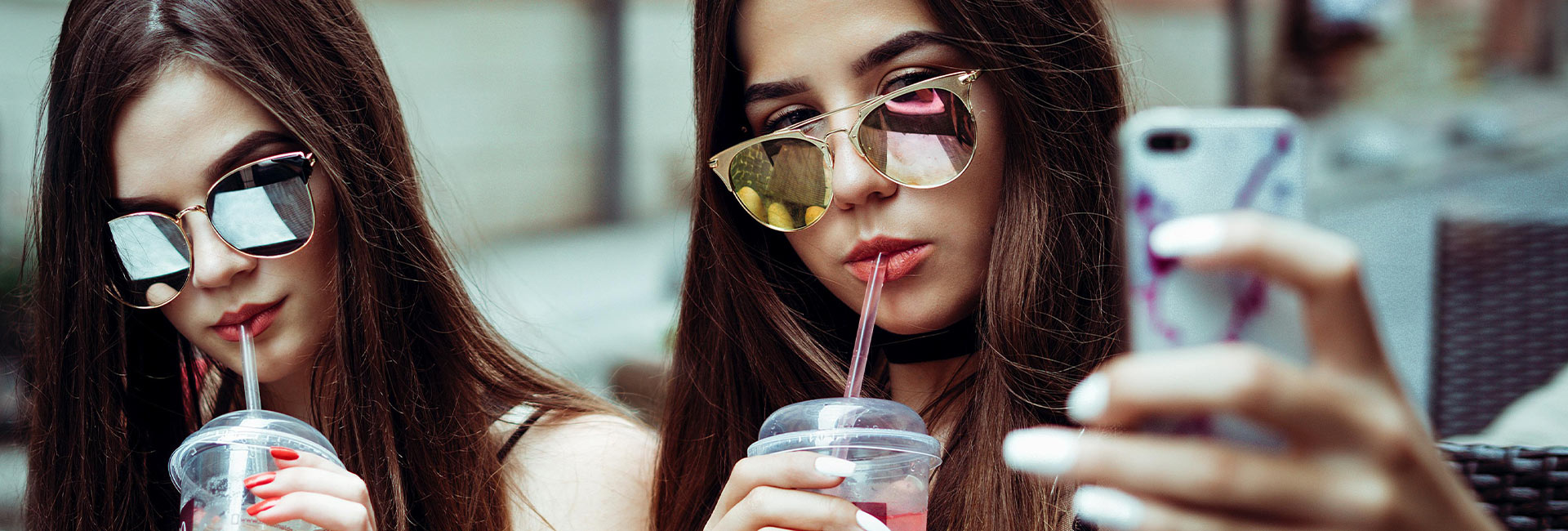Luxury brands and social media. One is exclusive. The other is inclusive. Balancing traditional and digital methods of marketing luxury brands can be a delicate process. Here’s how to make global social platforms work for your luxury brand.
While luxury consumers still value traditional advertising with glossy magazines and print publications synonymous with the luxury experience, the digital world offers endless ways to connect with luxury consumers.
In fact, luxury shoppers are some of the most avid users of visual platforms like Instagram. Viewing five times as much content, luxury consumers “like” posts three times as often and post twice as many updates as the average user.
Social media is a great way to help your luxury brand stay present in your customers’ everyday lives. Protecting your luxury identity while engaging with digital audiences can be challenging – but it’s worth the effort.
MIND THE MILLENNIALS
Millennials make up 32% of the world’s population and, together with Generation Z, they’re predicted to make up 45% of the global luxury market by 2025. So it’s more important than ever to understand and engage with Millennial online shoppers who, on average, spend six hours a week shopping online – 50% more than older generations.
Regardless of your target demographic, in today’s digital world, luxury shoppers engage with brands through multiple channels. For example, there can be up to 15 touchpoints for Chinese luxury shoppers throughout their customer journey, half of which are digital. That’s why top luxury fashion brands like Tiffany and Vogue use a combination strategy to reach customers. This involves a mix of aspirational content, Instagram stories, and working with influencers.
This kind of digital engagement is driving change in the luxury industry. The immediacy of social interaction has created pressure for products to be available as soon as users see them on social media. With that in mind, several fashion houses have introduced “see now, buy now” campaigns to accompany their runway shows.
WHO’S HENRY?
As a result of this shift in consumer thinking, a new luxury market is emerging. More of a mindset than a demographic, HENRYs (High Earners Not Rich Yet) are people who are not yet wealthy but are still attracted to luxury brands.
Often hard to please, HENRYs want to be wowed with personalized goods and an immersive shopping experience – but they don’t want to break the bank. However, they also make great brand advocates, so global social platforms like Instagram are a great way to engage HENRYs and create the kind of experience they’re looking for. Giving them exclusive, behind-the-scenes access to your brand allows HENRYs to feel connected with your brand.
LUXURY SOCIAL MARKETING ON INSTAGRAM
In June 2018, the number of active monthly Instagram users worldwide reached 1 billion. Luxury global consumers are some of the most influential on Instagram, with almost twice as many followers as the average user. They also like to stay in the know and follow 2.5 times as many accounts.
These Instagrammers spend most of their time on the site engaging with brands – 56% use the platform to view the latest collections, and 58% use it to stay up to date with the latest trends. Luxury fashion is particularly suited to Instagram since engagement with fashion consumers relies so heavily on visual communication and experience.
Luxury fashion also drives measurable action from followers. For example, during fashion month AW17, 64 million people generated 387 million likes, comments and pictures. Joining the platform isn’t a vanity project for luxury brands – it’s an effective tool for increasing brand engagement and, ultimately, driving sales.
To break into Instagram, here are four things luxury brands should consider:
FOUR INSTAGRAM MARKETING TACTICS FOR LUXURY BRANDS
1. Influencers
Fashion influencers are key to connecting with HENRYs and luxury consumers online, driving awareness and consideration of luxury products. Influencer content can feel more accessible than brand-focused content and is a powerful way to attract younger customers.
Establishing an official partnership with influencers can be an effective way to promote luxury fashion. But transparency around paid influencer promotion is important. In the US, the “paid partnership with” tag allows you to track ROI on partner influencer posts while building trust with fans.
2. Instagram Stories
Instagram stories play to luxury brand story engagement, offering a dynamic way to highlight specific and spontaneous connection points – and there’s a big audience for them. Over 300 million users actively engage with Instagram stories each day, and one-third of the most viewed stories are from consumer brands.
3. Shoppable Posts
Shoppable posts on Instagram allow brands to tag products, creating a seamless link between post and purchase. This feature is relatively new, but it’s important to consider how instant shopping might work for your luxury brand. Do you want to give customers a fast link to prices and shopping, or would you prefer a more nuanced path to purchase? As the popularity of instant shopping grows, this is a feature you’ll want to consider.
4. Hashtags
Hashtags mobilize and create communities on Instagram around specific themes or ideas. Adopting trending hashtags is one way to go, but brands can also create buzz with their own tags and encourage followers to do the same in support of their campaigns and products.
LUXURY SOCIAL MARKETING IN ASIA: LINE AND WECHAT
Asian markets offer great opportunity for luxury brands, particularly among Chinese and Japanese consumers. However, social platform trends in these markets differ considerably. In Japan, 77% of all smartphone users use social platform LINE, while one billion monthly users in China use WeChat.
In Japan, LINE is growing in popularity for luxury brands. Louis Vuitton, Fendi, Dior and Prada have all launched on the platform in the past year, joining early adopters like Burberry and Coach.
Because LINE is essentially a messaging app, customers expect a friendly, informal content experience. There’s also a wide range of tactics available to boost your presence on the platform, such as chatbots, exclusive wallpapers and stickers.
In an effort to connect with social users in China, many international luxury brands have also embraced WeChat. Like LINE, WeChat is a messaging tool, but it allows brands to create a variety of campaigns to drive engagement. For example, WeChat’s Moments feature – which displays videos on users’ timelines – has been an effective tactic for brands like Miu Miu, Chanel and Yves Saint Laurent.
Italian luxury shopping destination Montenapoleone has also just launched a WeChat account to engage with its Chinese customer base. The world’s most expensive shopping street with over 150 brands, it’s the first European district to do so.
FINAL THOUGHT
Luxury brands and social media may not seem like a natural pair. But many luxury brands are successfully engaging with customers and fans online while strengthening their brand identity in international markets. With a well-thought-out strategy based on in-market platform trends, features, and influencers, social media is an effective way to connect with current and future generations of international luxury consumers online.


